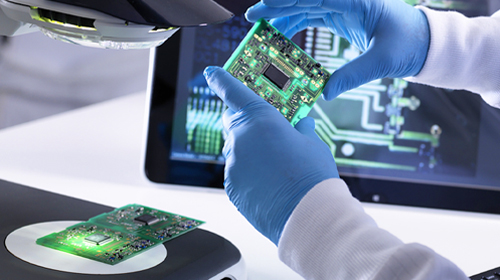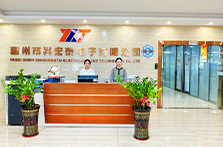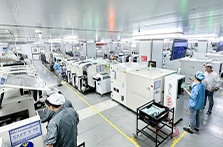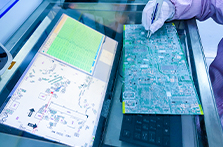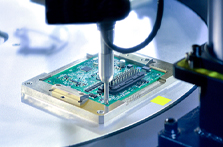About PCB and PCBA
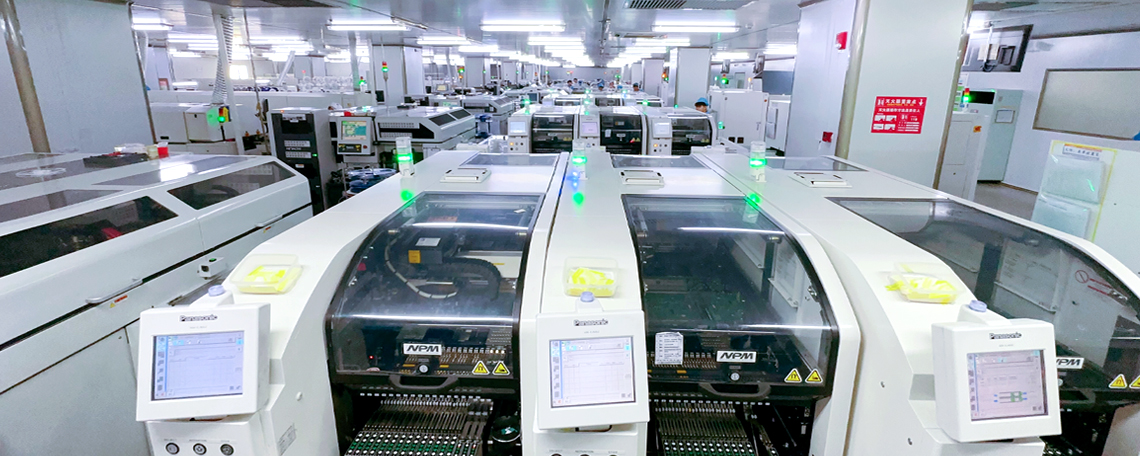
SMT
What are PCB and PCBA?
When you hold a smartphone or work on a computer, have you ever thought about the structural secrets behind these high-tech products? This guide will focus on two basic concepts of the electronics industry – PCB and PCBA, to help you clarify the essential differences between them and appreciate the microscopic beauty of the electronic world.
Printed Circuit Board (PCB) is known as the “skeleton” of electronic products. It is a basic platform that carries and connects electronic components. Through the preset copper circuit diagram, current can be accurately directed and transmitted between different electronic components. To put it figuratively, PCB is like a city’s transportation network, determining the direction and efficiency of the flow of information and energy.
Printed Circuit Board Assembly (PCBA), which is a finished product further processed on the basis of PCB. That is, the “assembled printed circuit board”. At this stage, PCB is no longer a simple circuit carrier, but undergoes a series of precision processes such as SMT (Surface Mount Technology) or THT (Through Hole Technology) to integrate various electronic components such as resistors, capacitors, and IC chips. It is precisely installed and welded on it to make it truly “alive” to form an electronic module with specific functions.
Analyze PCB and PCBA
1-1. What types of PCB are there?
1. Single-sided PCB: This is the most basic type of PCB. As the name suggests, it has only one side covered with copper and has some lines. It is used in simple electronic devices.
2. Double-sided panels: Double-sided panels and single-sided panels are connected to each other, increasing the circuit layout on the other side, doubling the wiring space, and effectively increasing the circuit density, which is widely evaluated in mid- to low-end electronic products.
3. Multilayer boards: When electronic equipment needs to handle more complex functions, double-sided boards alone can no longer meet the needs. At this time, multilayer boards emerge as the times require. It arises from multiple mutually insulated conductive layers and dielectric layers, which greatly increases circuit density and complexity. It is commonly found in high-end computer motherboards, communication equipment and other fields.
4. HDI (High-Density Interconnect) board: PCB with high-density interconnection technology, which has thinner wires, smaller apertures and denser wiring. It is especially suitable for mobile communication equipment and consumer products that pursue miniaturization and thinness. Class equipment electronic products.
5. FPC (Flexible Printed Circuit): Also known as flexible circuit board, its base material is a film material that can be bent and folded, which can adapt to various shapes of spatial layout. It is commonly used in folding screen mobile phones, wearable devices, etc. Flexible bending occasions.
6. Rigid-flex board: It combines the advantages of hard boards and soft boards. Some areas remain hard and do not deform, while other areas can bend freely. This hybrid structure is particularly suitable for complex electronic devices that require both strength and flexibility.
7. Three-dimensional PCB: This is one of the latest development trends of PCB technology. Three-dimensional wiring is realized through stacking technology, which greatly improves the integration and performance of electronic products.
1-2. The meaning and design of PCBA
Meaning: PCBA is an “assembled printed circuit board”, which contains various components such as resistors, capacitors, and IC chips. They are accurately installed and welded on the PCB to form a fully functional circuit system. ,
Design: Engineers first convert and determine the location and connection method of each PCB on the PCB based on the circuit schematic diagram with tight product functional requirements and the PCB wiring diagram. In addition, additional PCB materials, layers and processes are used, and advanced EDA design software is used for electrical performance simulation and optimization.
1-3. PCBA processing technology
In the PCBA industry, there are two core processing technologies, namely Surface Mount Technology (SMT) and Through-Hole Technology (THT).
SMT(Surface Mount Technology)
This technology allows components to be attached directly to the PCB surface without penetrating the circuit board. This process allows components to be small in size and closely spaced, significantly improving the wiring density and space utilization of the circuit board, and is very suitable for the needs of miniaturized and lightweight electronic products.
The main process steps of SMT in XHT company
1. Solder paste printing: Use screen printing technology to evenly apply solder paste with metal powder on the corresponding pad positions of the PCB to provide soldering materials for subsequent component placement.
2. Component placement: Using a high-precision SMT placement machine, the Surface Mount Device (SMD) is accurately adsorbed, aligned and placed on the solder paste-coated pad according to the preset program.
3. Reflow soldering: The mounted PCB passes through the reflow furnace. The temperature curve set in the furnace gradually melts the solder paste, tightly combining the components with the PCB pads, and forming a stable electrical connection after cooling.
THT(Through-Hole Technology )
This technology requires components to be fixed through the pins passing through the guide holes of the PCB, and then electrically connected by soldering to the back of the board. Although THT is slightly inferior to SMT in terms of automation and component density, it has good mechanical strength and stability, and is especially suitable for situations where it can withstand greater impact, vibration or current load.
The main process steps of THT in XHT company
1. Component plug-in: Unlike SMT, electronic components (such as DIP, PGA, etc.) under the THT process have pins, and manual or automatic plug-in machines are required to insert the component pins into the reserved via holes of the PCB.
2. Wave soldering: Then, the PCB passes through the wave soldering machine, and the solder forms a continuous wave peak in the liquid state. When the PCB passes through the wave peak, the solder naturally fills the gap between the component pins and the PCB pad to achieve firm welding.
3. Manual repair welding: For some parts that are not suitable for wave soldering or difficult to automatically weld, experienced technicians are required to perform manual repair welding to ensure the quality of each solder joint.
In actual production, XHT Company will use a combination of SMT and THT processes for many complex electronic products to achieve the best balance between performance and cost. For example, the main body of the product uses SMT to achieve a high degree of integration and miniaturization design. At the same time, for specific functional modules or parts that require high reliability, the THT process is used to ensure sturdiness and durability. Such a mixed assembly strategy fully reflects the complementary advantages between SMT and THT to enhance customers’ market competitiveness.
How does XINGHONGTAI design a PCB and PCBA solution tailored for you?
1. Listen to your needs
First, we will have an in-depth communication with you to learn more about key elements such as the product’s core functions, performance requirements, application scenarios, and budget range. This step is like grasping the overall concept of the building before drawing the blueprint, ensuring that our design plan always revolves around your core demands.
2. Draw the schematic diagram
Based on the requirements you provide, our engineers will draw a detailed circuit schematic diagram, carefully select the most suitable components, and fully consider circuit stability, electromagnetic compatibility and signal integrity to ensure that the design solution can meet meet current needs and adapt to possible future technological upgrades.
3.PCB board layout
Next, we enter the PCB layout stage. We will use professional software to carry out three-dimensional layout, so that the position, direction and routing path of each component are carefully considered, taking into account space utilization, heat dissipation efficiency and electromagnetic compatibility, forming a high-density, high-performance performance circuit board structure.
4. Intelligent simulation
After the design is completed, simulation verification is performed through advanced EDA tools, including signal integrity and power integrity analysis, thermodynamic simulation, etc., to reveal potential problems in advance and make necessary adjustments and optimizations to ensure that the designed PCB can be used in actual applications. Stable and reliable operation.
5. Design PCBA solution
For PCBA design, we will strictly select components according to the characteristics of the project, comply with environmental standards such as RoHS, and formulate a detailed bill of materials (BOM). At the same time, we determine the optimal SMT and THT processing methods and assembly processes, and strive to effectively control costs while ensuring quality.
6. Strict quality inspection
Finally, we will carry out high-quality PCB manufacturing and PCBA assembly according to the design plan, strictly implement various quality control measures, and complete comprehensive functional testing and performance verification before leaving the factory to ensure that each PCBA meets the predetermined standards.
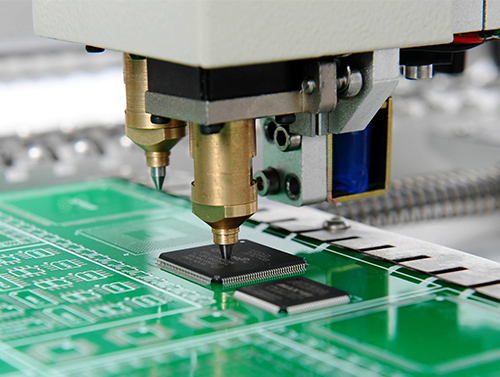
Why is XINGHONGTAI your best choice?
In today’s highly competitive electronics manufacturing field, choosing a suitable PCBA (Printed Circuit Board Assembly) manufacturer is the first decision faced by any electronic product developer and manufacturer.
XHT Technology adheres to the concept of serving customers with the best cost performance. They rely on advanced production equipment and efficient production processes to provide high-quality circuit board products at the lowest possible cost. The “low” here is by no means the result of sacrificing quality, but the cost savings achieved through scientific management and lean production.
At the same time, with XHT Technology, customers can not only enjoy a clear purchase process, but also feel an honest business attitude with no hidden fees throughout the process. This means you have absolute control over your budget, so you don’t have to worry about extra expenses and can easily lock in project costs. To this end, we have listed some of the PCBA manufacturing advantages of XHT Company below to facilitate you to understand XHT more comprehensively:
1. Strong technical strength
XHT has been deeply involved in the PCBA industry for many years. In terms of SMT technology, we have advanced equipment such as SPI, Panasonic NPM-D3A placement machines, dispensing machines, reflow soldering machines, IC chip burning machines, AOI inspection machines, X-ray inspection machines, etc. At the same time, in terms of THT technology, we have wave soldering machines, AI vertical automatic plug-in machines, AI horizontal automatic plug-in machines, automatic riveting machines, DIP automatic slitting machines, ICT, etc. In addition, we are equipped with a first-class technical team. Every engineer in the team is proficient in circuit board design and manufacturing, ensuring that the quality, precision and stability of the PCBA products produced reach international standards.
2. Strict quality control
XHT strictly abides by ISO9001, ISO14001, IPC-A-610 and other international certification systems. From raw material procurement to production process to final quality control, every link is controlled by a strict quality management system and complies with international Rosh standards. Ensure that every product meets or exceeds customers’ quality expectations.
3. Competitive price advantage
While ensuring product quality, XHT relies on scale effects and lean production management to effectively control production costs and provide customers with highly competitive prices in the market. Choosing XHT means maximizing cost savings and increasing profit margins while ensuring product quality.
4. Quick response and customization capabilities
XHT has a professional customer service team that responds to customer needs at any time and quickly provides production arrangements for sample proofing, small batch trial production and large batch orders. At the same time, XHT is also good at providing customized PCBA solutions based on the specific needs of different customers, helping companies seize opportunities in market segments.
XHT promises: XHT can provide at least 12 SMT production lines, 10 automatic plug-in equipment, 8 DIP production lines, and 8 assembly test lines for your PCBA manufacturing services at any time to meet your all-round and diversified product needs. In addition, you can also get a complete product guidance plan from the XHT expert team.
XINGHONGTAI’s PCBA service scope
1. Whether you need a small circuit board for trial production verification in small quantities or a medium to high-capacity circuit board for mass production, we will provide you with satisfactory products at highly competitive prices.
2. Meet your various needs for Through-Hole Assembly (THT) and Surface Mount Technology (SMT).
3. Provide you with a full range of customized services from prototype PCB assembly to short-term project assembly.
Hot Post
